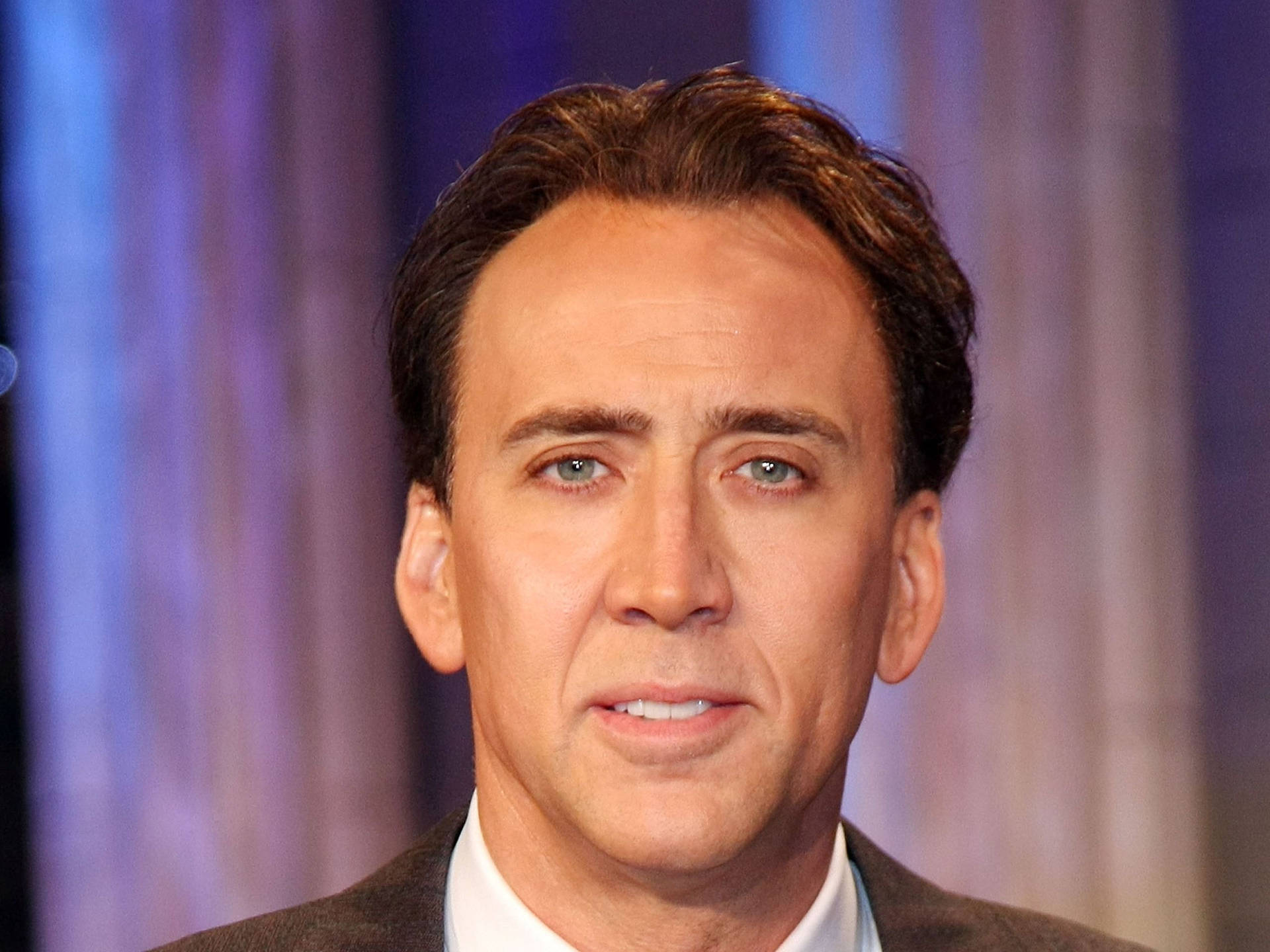
Nicolas Cage. The name itself conjures images of unbridled cinematic energy, eccentric characters, and a career path as unpredictable as a desert road in a fever dream. But beyond the silver screen, Cage’s life has been a captivating narrative of its own, filled with astounding acquisitions, philosophical quests, and financial twists that could rival any Hollywood plot. He was once a titan of Tinseltown, his estimated net worth soaring to an impressive $150 million, a fortune many could only fantasize about.
Yet, this isn’t a simple tale of accumulation, but rather one of fascinating dispersion. Cage didn’t just spend his millions; he invested them in a tapestry of items ranging from the undeniably bizarre to the historically profound, all fueled by a unique blend of personal interest and an almost mythic yearning. From the sun-drenched shores of a private Bahamian island to the ancient stones of European castles, his purchases painted a picture of a man driven by more than mere extravagance.
At the heart of one of his most infamous financial sagas lies a 70-million-year-old secret, a relic from a bygone era that entangled the actor in an international mystery and ultimately led to its return to its rightful home. This is the story not just of a missing dinosaur skull, but of the compelling journey of a man who pursued his passions with an intensity that reshaped his fortune and revealed the intricate connection between personal ambition, historical artifacts, and the very ground we walk upon.

1. **The Infamous Tyrannosaurus Bataar Skull Purchase**The year 2007 marked a pivotal moment in Nicolas Cage’s collecting endeavors, one that would later unravel into a global incident. It was in March of that year that the Academy Award-winning actor made a significant splash at the I.M. Chait Gallery in Beverly Hills, where he legally purchased a Tyrannosaurus bataar skull. This extraordinary fossil, a carnivore much like its more celebrated cousin the Tyrannosaurus rex, lived approximately 70 million years ago, with its remains exclusively found within the borders of Mongolia.
Cage reportedly outbid fellow actor Leonardo DiCaprio, securing the prehistoric artifact for a staggering $276,000. At the time of the sale, the skull was described by the I.M. Chait Gallery as “an extremely rare tyrannosaurid” from the Late Cretaceous period. It measured an impressive 32 inches in length and was considered to be approximately 65 percent complete, featuring “knife-like serrated teeth” that offered a chilling glimpse into the ancient predator’s formidable nature.
For Cage, this was more than just an expensive curio; it represented a tangible piece of Earth’s deep history, a relic that undoubtedly resonated with his burgeoning interest in mythology and the profound narratives embedded within the planet itself. The purchase, seemingly legitimate, was accompanied by a certificate of authenticity from the auction company, providing Cage with what he believed was valid proof of the skull’s provenance.

2. **The Legal Battle and Repatriation of the Skull**The tranquility surrounding Cage’s acquisition was shattered eight years later, in 2015, when federal authorities initiated a civil forfeiture complaint. The office of Preet Bharara, a federal prosecutor in Manhattan, filed the complaint to seize the skull, alleging it had been stolen. While the complaint itself didn’t explicitly name Cage as the owner, his press agent, Alex Schack, confirmed that the actor was indeed the purchaser.
This marked the beginning of an intricate legal and diplomatic process, highlighting the growing global effort to combat the illicit trade of cultural artifacts. The investigation revealed that U.S. authorities had first contacted Cage’s representatives in July 2014. The Department of Homeland Security informed him that the fossil he had acquired might have been illegally smuggled into the United States from Mongolia.
Faced with this revelation, Cage cooperated fully with the investigation. His representative stated that the actor agreed to transfer possession of the fossil to the Department of Homeland Security, based on a determination that “the fossil was indeed illegally smuggled into the U.S. and rightfully belongs to the Government of Mongolia.” The decision to return the skull, despite the financial loss—Cage never got his money back, which he told the *New York Times Magazine* “stank”—underscored his commitment to ethical collecting and international law. He admitted, “Of course it should be awarded to its country of origin. But who knew?” This saga highlighted the complexities of the antiquities market, where even reputable auctions can unknowingly facilitate the trade of illegally obtained artifacts. The skull’s eventual journey back to Mongolia, following its seizure by U.S. authorities, became a powerful symbol of national heritage and the collaborative efforts required to protect it.
Read more about: Sami’s Journey: Unpacking the Incredible Transformations of Northern Europe’s Resilient Indigenous People

3. **A Collector’s Eclectic Tastes: Beyond Dinosaurs**While the Tyrannosaurus bataar skull stands as a prominent example of Cage’s unique collecting habits, it represents just one facet of a much broader and more eccentric portfolio of acquisitions. His substantial fortune, once estimated at around $150 million, was not solely dedicated to prehistoric giants. Instead, he amassed a collection of items that defied conventional categorization, each piece a testament to his individual curiosities and often, a deep dive into the unusual corners of history and natural phenomena.
Among these fascinating possessions were items that truly stretched the imagination. Cage reportedly purchased a nine-foot-tall burial tomb, an acquisition that speaks to a profound interest in mortality, history, or perhaps a more macabre aesthetic. He also owned shrunken pygmy heads, relics with a controversial past that reflect a fascination with anthropology’s darker narratives. These purchases, while certainly unconventional, highlight a collector who was not afraid to venture far beyond the predictable realm of luxury goods, seeking out pieces that offered a narrative or a unique connection to human or natural history.
And then there were the living, breathing curiosities. Cage famously acquired an octopus. While he humorously downplayed its financial impact, telling the *New York Times*, “What is an octopus, $80? You’re not going to go into dire straits buying an octopus,” it undeniably contributes to the image of a man driven by a singular, uninhibited desire to explore the world’s wonders. Alongside these, he owned a true cultural icon: “Action Comics No. 1,” the very first comic to feature Superman, which he bought for $150,000. This blend of the ancient, the esoteric, the biological, and the pop-cultural demonstrates a collector of truly unparalleled and captivating taste.
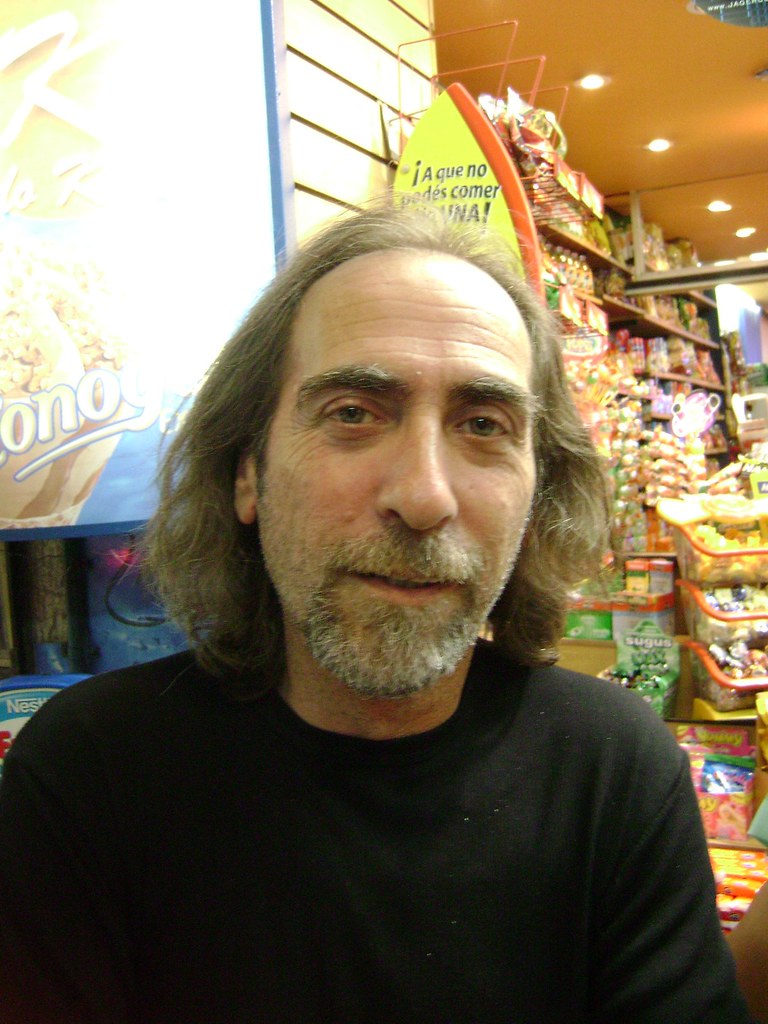
4. **The Grand Ambition: Cage’s Global Real Estate Empire**While the eccentric individual items often captured headlines, it was Nicolas Cage’s sprawling real estate portfolio that truly impacted his financial standing and played a far more significant role in his eventual monetary woes. Far from a casual investor, Cage became a global property magnate, owning an astonishing 15 residences across the world at one point. This vast collection included lavish homes in California and Las Vegas, illustrating a keen interest in both the glitz of Hollywood and the vibrant energy of entertainment hubs.
His ambition, however, stretched far beyond the American continent. Cage also acquired a deserted island in the Bahamas, a quintessential symbol of ultimate luxury and privacy, offering a secluded retreat from the relentless glare of public life. This particular purchase further underscored his desire for grand, almost fantastical, possessions. These were not mere investments in the traditional sense; they were extensions of a grand vision, a personal empire built on tangible assets that reflected his aspirations and perhaps, a yearning for security and significance.
The European continent also became a significant part of his real estate endeavors, with Cage purchasing two historic castles. These included the Neidstein castle near Etzelwang, southern Germany, for which he reportedly paid $2.6 million, and another European castle acquired for $10 million, along with a second for $2.3 million. Adding to this impressive collection was a $15.7 million countryside estate in Newport, Rhode Island. This accumulation of historic, often grand, properties hints at a deeper motivation than simple financial gain, aligning with his later philosophical quests and childhood aspirations.

5. **The ‘Holy Grail Quest’: Philosophy, Mythology, and Property**Nicolas Cage’s fervent acquisition of real estate, particularly his European castles and historical estates, was not merely a random accumulation of luxurious properties. Instead, it was deeply intertwined with a profound personal journey, which he himself dubbed a “quest for the Holy Grail.” This period saw the actor intensely engaged in philosophical study and meditation, delving into ancient texts and mythologies, seeking out profound meanings in the world around him. He told the *New York Times* that he went through a phase where “all I was doing was meditating three times a day and reading books on philosophy.”
This intellectual pursuit directly influenced his property choices. “I started following mythology, and I was finding properties that aligned with that,” Cage explained. This “holy grail quest” led him to explore “different areas, mostly in England, but also some places in the States,” transforming property investment into a literal expedition for meaning. He likened this meticulous search to building a personal library, where one book references another, leading to a continuous expansion of knowledge and connection. For Cage, the properties themselves became references, tangible links to the historical and mythical narratives he was absorbing.
His journey took him to places laden with legend, such as Glastonbury, where he found a spring in the Chalice Well that “does taste like blood,” a phenomenon he attributed to iron in the water, but which also resonated with the legend of a grail chalice or two cruets of blood and sweat. This exploration, though initially a literal search for an elusive artifact, ultimately led him to a profound personal conclusion. “What is the Grail but Earth itself?” he mused, a realization that reframed his entire quest and perhaps, his understanding of value and existence, suggesting that the true treasure was the planet’s own history and interconnectedness.
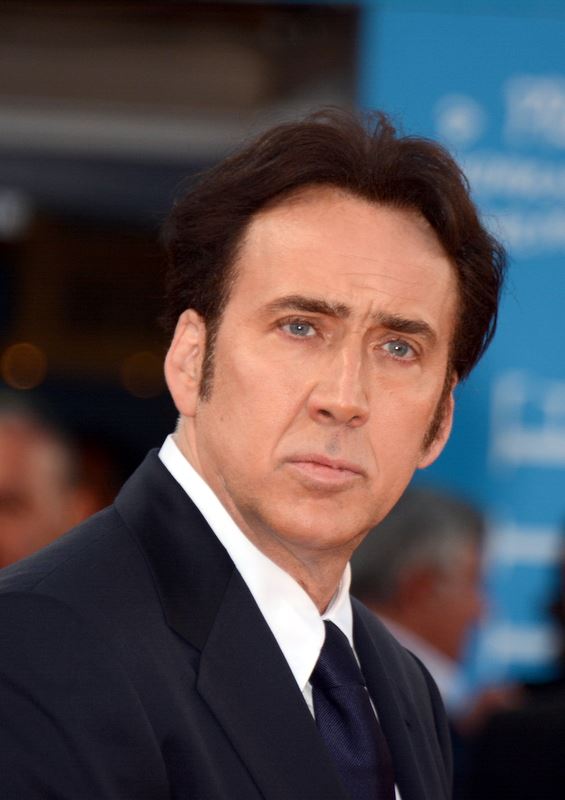
6. **Childhood Roots of Ambition: Aspirations for Grandeur**To fully understand the motivations behind Nicolas Cage’s extraordinary spending habits and his grand pursuit of real estate, one must look back to his formative years. His allure for mansions and an opulent lifestyle was deeply rooted in his childhood experiences, painting a picture of a young boy growing up with a modest upbringing in the shadow of immense wealth and privilege. Living outside of Beverly Hills with his professor father, Cage recalled a stark contrast between his daily life and that of some of his peers.
“I would take the bus to school, and some of the older boys were going to school in Maseratis and Ferraris,” he recounted to the *Times*. This early exposure to such extravagant displays of wealth undoubtedly fueled a nascent longing for more, igniting an ambition that would later manifest in his adult acquisitions. The desire for “mansions” wasn’t just about financial security; it was about attaining a certain status, a lifestyle he observed but didn’t initially possess.
A significant influence on these early aspirations was his famous uncle, Francis Ford Coppola. Cage recalled visiting him during summers, and these experiences left an indelible mark. “My uncle [Francis Ford Coppola] was very generous,” he explained. “I would visit him for summers, and those summers — I wanted to be him. I wanted to have the mansions. That was driving me.” This familial connection to grandeur and success provided a clear, aspirational benchmark, profoundly shaping his personal and financial trajectory and explaining the deep-seated motivations behind his later, lavish lifestyle.
Read more about: The Enigma and Tragedy of Linda Darnell: An In-Depth Look at a 1940s Hollywood Star
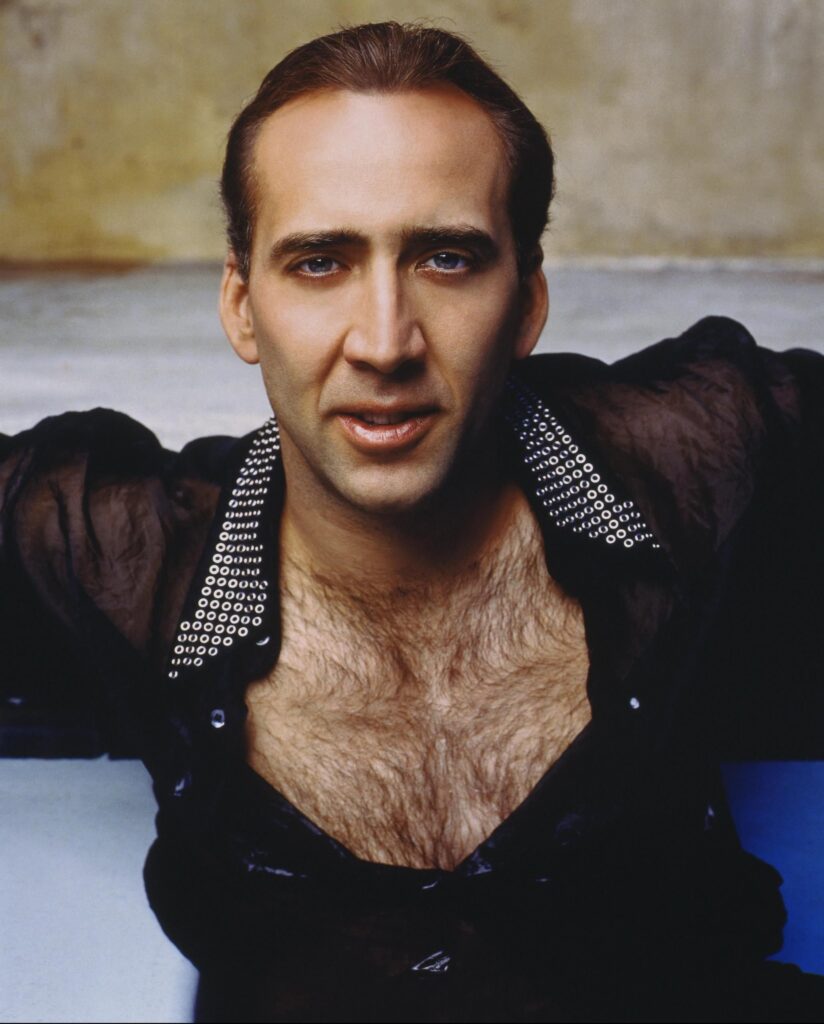
7. **The True Cost of Grandeur: Financial Repercussions**While Nicolas Cage’s collection of historical relics and unique curiosities often captured public imagination, it was ultimately the sheer scale of his real estate portfolio that proved to be the most significant drain on his once considerable fortune. With an estimated net worth of $150 million at his peak, Cage embarked on an ambitious journey to acquire a vast array of properties worldwide. However, this expansive collection, including numerous homes, castles, and even a private island, eventually led to severe financial strain and, for some properties, foreclosure.
It is a common misconception that his more unusual purchases, such as the infamous dinosaur skull or the shrunken pygmy heads, were responsible for his financial woes. As Cage himself humorously noted to the *New York Times*, ‘What is an octopus, $80? You’re not going to go into dire straits buying an octopus.’ These items, while undeniably eccentric, represented a comparatively minor expenditure when juxtaposed with the immense capital required to maintain and manage a global portfolio of 15 residences.
The weight of this expansive real estate ownership was compounded by substantial tax issues that further exacerbated his financial difficulties. In 2009, reports emerged detailing that Cage owed more than $6 million to the Internal Revenue Service for the 2007 fiscal year alone, alongside an additional $350,000 in unpaid taxes from earlier years. These figures underscored the profound financial pressures that accumulated as a result of his ambitious, albeit overextended, investment strategies.
Navigating through this turbulent financial period required significant adjustments to his lifestyle and career choices. It was not until 2022 that Cage confirmed he had finally settled his considerable debts. This milestone marked a turning point, allowing him to shift his focus from purely remunerative roles to a more selective approach, prioritizing projects that resonated more deeply with his artistic inclinations.

8. **Lessons Learned: Reflections on Investments**Despite the very public and often dramatic financial challenges he faced, Nicolas Cage maintains a nuanced perspective on his past investment choices. He openly acknowledges the distinction between what he considers ‘good investments’ and ‘bad investments,’ demonstrating a reflective understanding of how his passions and financial decisions intersected. His journey through immense wealth and subsequent restructuring offers a unique case study in the complexities of celebrity finance.
Cage articulates that his most satisfying acquisitions, the ones he classifies as ‘good investments,’ were those born from a genuine personal interest and an authentic enjoyment of history. For him, the value extended beyond monetary gain, encompassing the intellectual and emotional fulfillment derived from owning a piece of the past or an item with significant cultural resonance. This perspective highlights a collector driven by intrinsic motivations rather than purely speculative ones.
A prime example of such a ‘good investment’ is his purchase of ‘Action Comics No. 1,’ the groundbreaking comic book that introduced Superman to the world. He acquired this iconic piece of Americana for $150,000, a sum that, while significant, clearly aligned with his deep appreciation for popular culture and historical artifacts. Unlike his burdensome real estate, this acquisition brought him personal joy and proved to be a sound, if perhaps unexpected, financial asset over time.
His candidness also extends to reiterating that the more peculiar items in his collection were not the source of his financial distress. The now-famous anecdote about the octopus—’What’s an octopus, 80 bucks? You’re not going to go into financial ruin over an octopus’—serves as a poignant reminder that while sensational, these purchases were tangential to the larger financial decisions that led to his considerable debt. This reflection offers valuable insight into the often-misunderstood spending habits of high-net-worth individuals.

9. **A Mentor’s Touch: Discovering Johnny Depp**Beyond his acting prowess and collecting curiosities, Nicolas Cage also played an unexpected, yet pivotal, role in launching the career of another Hollywood icon: Johnny Depp. Their friendship, forged during their formative years in the industry, saw Cage offer a piece of advice that would forever alter the trajectory of a young musician who had yet to fully consider a path in acting.
Cage recounted a memorable evening playing Monopoly with his friend, during which he observed something in Depp that suggested an untapped talent. “We were good friends,” Cage began, describing the casual setting. “And we would play Monopoly, and he was winning a game, and I was watching him and I said, ‘Why don’t you just try acting?'” Depp, who was then primarily focused on his musical aspirations, initially dismissed the idea, stating he couldn’t act. However, Cage’s conviction was firm: “I said, ‘I think you can act.'”
Taking his friend’s potential seriously, Cage connected Depp with his own agent. The rest, as they say, is history, but the speed of Depp’s breakthrough was truly remarkable. Cage’s agent sent Depp on his very first audition for a film called *A Nightmare on Elm Street*, and he secured the role that very day. Cage reflected on this extraordinary turn of events, noting, “Overnight sensations don’t happen. But it happened with him,” highlighting the almost mythical speed of Depp’s ascent into the acting world, all sparked by a supportive friend’s perceptive eye.
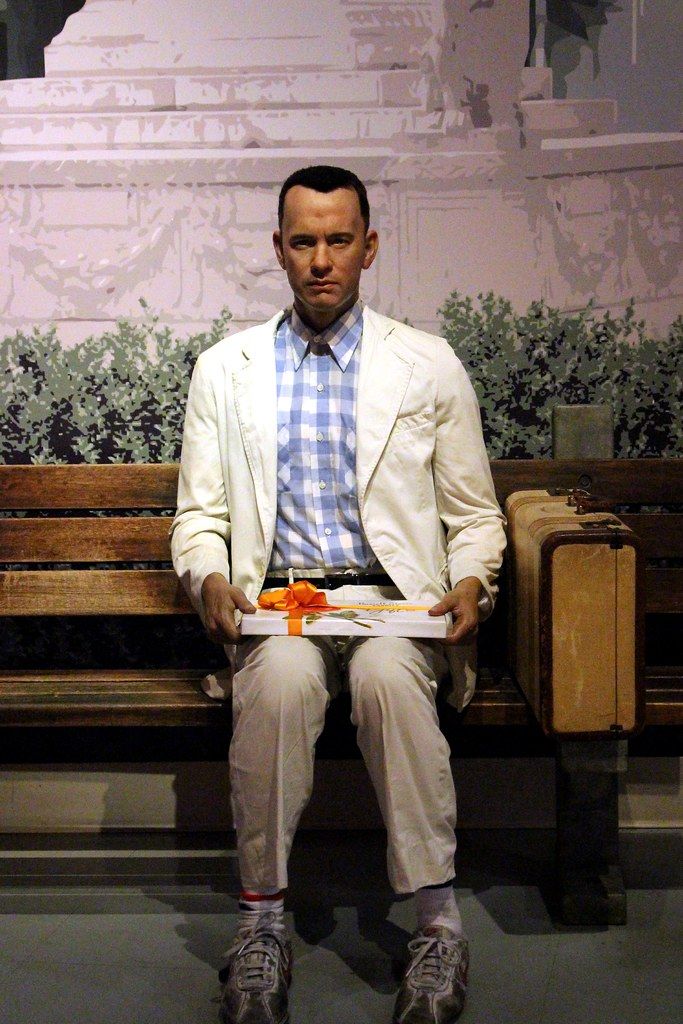
10. **Creative Tensions: Working with Uncle Francis Ford Coppola**Nicolas Cage’s career has also been marked by profound personal and professional interactions with his celebrated uncle, director Francis Ford Coppola. One particularly memorable instance of creative friction arose during the production of the 1986 film *Peggy Sue Got Married*, a project Cage initially resisted but ultimately undertook at Coppola’s insistence. The experience not only strained their professional dynamic but also left a lasting impression on Cage’s approach to his craft.
Cage’s reluctance was palpable; he recounted telling his uncle “no five or six times” when first offered the role. His skepticism about the film’s premise was evident, as he directly questioned Coppola, “‘Uncle, why do you want to make this movie at all?'” Despite his reservations, Coppola’s persuasive appeal—”Just come to rehearsal”—eventually led Cage to agree, but with a significant condition: “I’ll do it if you let me go really far out with the character.” This agreement paved the way for an interpretation that was anything but conventional.
True to his word, Cage pushed the boundaries of his character, adopting a distinctive, almost cartoonish vocal style. “I want to talk like Pokey from The Gumby Show,” he declared, much to the consternation of those around him. During rehearsals, this avant-garde portrayal was met with discomfort, with co-star Kathleen Turner reportedly “very upset,” desiring a more grounded performance akin to Cage’s role in *Birdy*. Instead, as Cage noted, she got “Jerry Lewis on psychedelia,” a comedic, exaggerated take that simply “did not go over well.”
The situation escalated to the point where Ray Stark from Tri-Star, the studio executive, flew in with the intention of firing Cage. It was Francis Ford Coppola’s unwavering support and influence that saved his nephew’s role. “Thankfully Uncle went to bat and said, ‘Young Nicky’s doing this,'” Cage remembered. While Coppola’s intervention preserved his position in the film, the creative clashes and the strong reactions to his performance led to a significant professional consequence: “needless to say, I never worked for them again after that,” a clear indication of the deep-seated tensions the film generated.
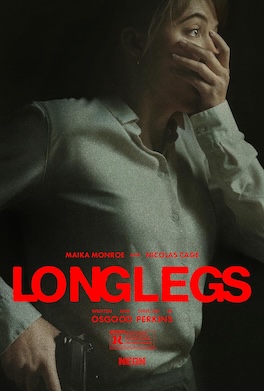
11. **From Debt to Artistic Freedom: Cage’s Evolving Career Path**The arduous journey of settling his financial burdens, which finally concluded in 2022, marked a pivotal transition in Nicolas Cage’s professional life. For years, the necessity of earning income to address his substantial debts meant taking on numerous film roles, a period that saw him appear in a diverse, sometimes overwhelming, array of productions. With the weight of financial obligations lifted, Cage found himself liberated to approach his career with renewed artistic discernment.
This newfound freedom allows him to be “more selective in his future film roles,” a stark contrast to the previous years where quantity often superseded artistic choice. It reflects a matured perspective on his craft, where the intrinsic value of a project and its creative potential now take precedence. This shift promises an era where Cage can more fully explore the nuanced characters and compelling narratives that truly ignite his passion.
Recent performances vividly illustrate this evolving approach. His role in Oz Perkins’ horror film *Longlegs*, for instance, garnered significant attention for its terrifying intensity, showcasing a willingness to delve into challenging and artistically bold projects. Such choices signal a deliberate move toward roles that allow for deeper character exploration and a more profound engagement with cinematic artistry, rather than merely fulfilling contractual obligations.
Nicolas Cage’s journey is a testament to resilience and an enduring commitment to artistic expression. From the audacious acquisitions of his opulent past to the quiet determination of settling immense debts, and now to a revitalized pursuit of meaningful roles, his career continues to defy easy categorization. It is a compelling narrative of a man who has traversed the extremes of fortune and fame, emerging with a clearer vision and an unwavering dedication to the art of performance, proving that even after the most challenging sagas, the story is far from over.



